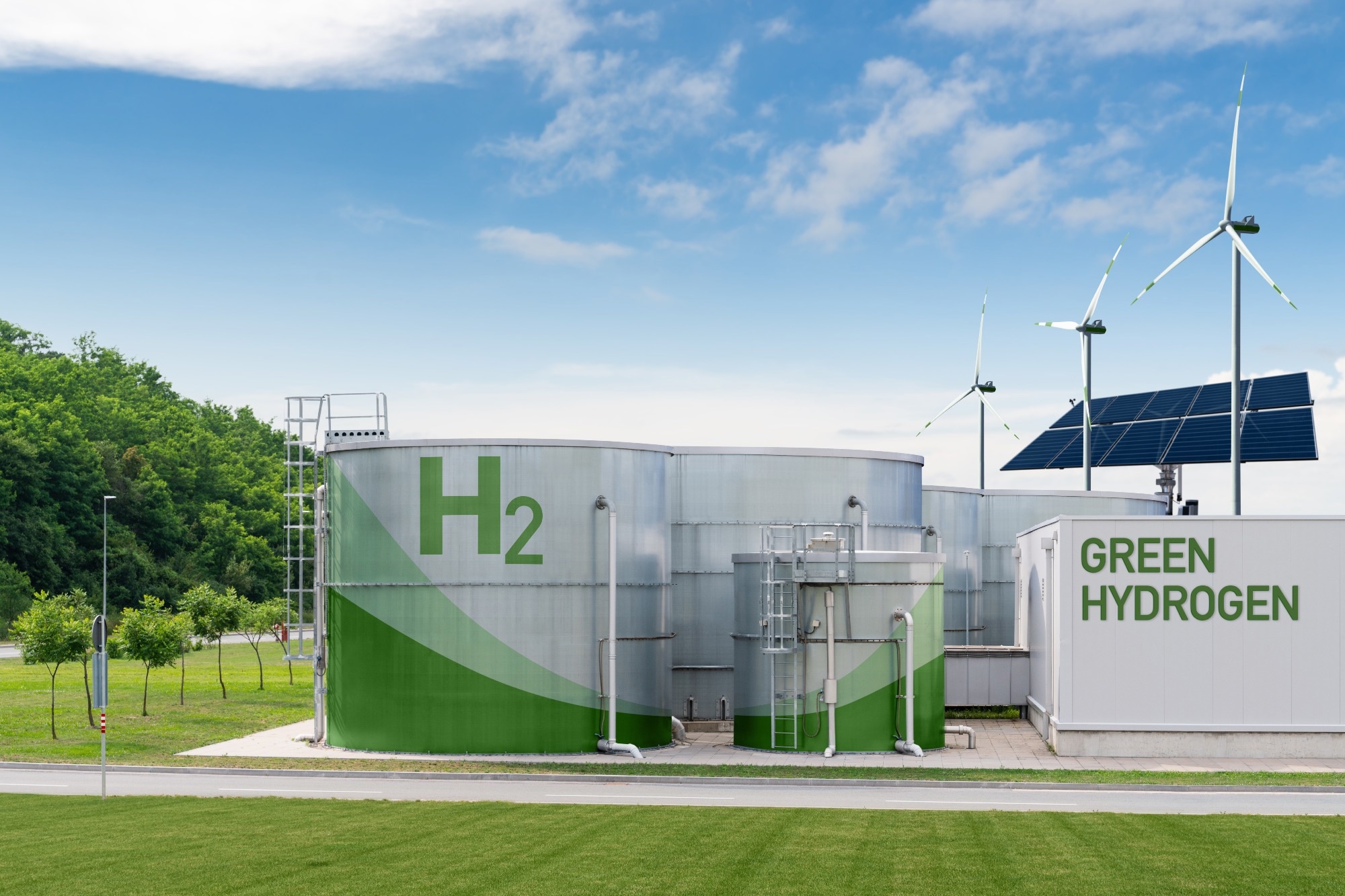There is a growing desire to transition to sustainable energy sources and significantly reduce carbon emissions. As such, low-cost renewable energy sources (e.g., solar, wind, hydro) are being developed and rolled out on a global scale.
However, these sources are inherently limited and susceptible to various variables. Therefore, there is a need for investment in energy storage solutions capable of lasting not just hours but days or even seasons.
One promising energy storage method involves converting clean, renewable electricity into hydrogen. This process, known as electrolysis, involves splitting water into hydrogen and oxygen using green energy. Since this method does not produce CO2 emissions, the resulting hydrogen is classified as “Green H2.”
Green Hydrogen Development
Investments in the development and use of Green H2 is currently on an upward trajectory. The United States Department of Energy has championed the benefits of hydrogen within the clean energy sector, claiming, “Hydrogen can be produced domestically…when used to power highly efficient fuel cell electric vehicles, hydrogen holds the promise of helping strengthen national energy security, conserve fuel, and diversify our transportation energy options for a more resilient system.”

Image Credit: Scharfsinn/Shutterstock.com
Hydrogen Research
For decades, using hydrogen as a renewable energy source has garnered significant attention; however, research and investment have only recently taken off. The Green Hydrogen Catapult Initiative aims to increase Green H2 production by up to 50 times in the coming years at the cost of around $2/kg—the extended target is achieving this at $1/kg.
Green H2 can be used as an energy and fuel replacement for EVs, heating, electricity, and possibly trains, aircraft, and bus transportation. As a result, it is predicted that Green H2 could account for around 12 % of global energy usage by 2050. The extensive use of Green H2 could have an impact on global relationships alongside the energy system.
Harvesting Hydrogen
However, harvesting hydrogen for energy usage is traditionally considered an expensive solution. Liquid alkaline electrolyzers (AELs) have been in use for over 100 years. Yet, they are still vulnerable to low current density operation, which means large systems are required, as well as safety issues associated with the use of concentrated caustic.
Proton Exchange Membrane Water Electrolyzers (PEMELs) have surfaced as a more desirable option with a smaller footprint. However, they still require the use of costly and rare materials, including platinum and iridium – and there are questions surrounding how scalable this technology really is. However, new research on an alternative method suggests these materials might not be needed after all.
Hydrogen Production Via Electrolyzers
Anion Exchange Membrane Water Electrolyzers (AEMELs) have the potential to bring together the advantages of both AELs and PEMELs. They use an anion exchange membrane (AEM), which functions as a separator between the produced H2 and O2.
They operate at high pH, meaning fewer restrictions on the material used, meaning that low-cost metals can be used as catalysts and stack components.
The membranes are typically hydrocarbon-based rather than fluorinated, making them both cheaper and more environmentally friendly to produce. Specifically, AEMELs enable the use of stainless steel or nickel as more affordable and abundant alternative materials. This innovation led to the collaboration between Technetics and the University of South Carolina (UofSC).

Image Credit: chayanuphol/Shutterstock.com
New Developments in Hydrogen Production
William E. Mustain, Ph.D., a professor of Chemical Engineering at UofSC, along with a team of researchers including members from Technetics Group, conducted a series of experiments on 14 commercial and pre-commercial porous transport layers (PTLs) for use in the AEMEL anode.
These PTLs, made from stainless steel and nickel alloys, were tested to identify which properties led to the best AEMEL performance—specifically, low voltage operation and efficient Green H2 production with minimal energy input. Notably, eleven of the PTLs, including the top performer, were custom-developed by Technetics Group.
The Technetics/USC team developed a Hastelloy PTL with a thickness of less than 300 microns (< 0.3 mm) and a density between 60-65 %, which was optimal for hydrogen separation.
Technetics Group’s Feltmetal FM515 was rolled to achieve this thickness and density. These characteristics resulted in low electrical resistance, low contact resistance, and improved water and oxygen transport while also providing a suitable surface for catalyst layer deposition.
The best-performing PTL demonstrated an operating voltage of just 1.64 V at a current density of 1.0 A/cm² and maintained an operating voltage of less than 2 V at 3.5 A/cm². Additionally, the cells exhibited low voltage degradation rates. These results are among the best reported to date for electrolyzer systems, showcasing significant promise for future applications.

This information has been sourced, reviewed and adapted from materials provided by Technetics Group.
For more information on this source, please visit Technetics Group.